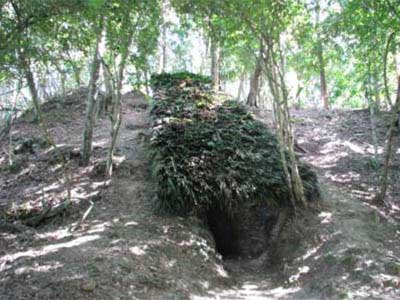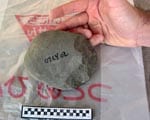Science journalist Ker Than interviewed SMU archaeologist Brigitte Kovacevich about her Maya research in Guatemala. His article “Lost City Revealed Under Centuries of Jungle Growth” published April 26 on the daily news web site of National Geographic.
Kovacevich, an assistant professor in the SMU Department of Anthropology, is an expert in Meso-American cultures and co-leader of an international scientific team that has been granted permission by the Guatemalan government to work the site of Holtun, or “Head of Stone,” which has never before been excavated.
The archaeological team has made the first three-dimensional topographical map of the site’s ancient monumental buildings, long buried under centuries of jungle at the Maya location.
The map puts into 3-D perspective the location and size of Head of Stone’s many buildings and architectural patterns, which are typical of Maya sites: 70-foot-tall “triadic pyramid,” an astronomical observatory, a ritual ball court, numerous plazas and also residential mounds that would have been the homes of elites and commoners, says Kovacevich.
The map situates the primary buildings relative to one another and also places them within the context of the site’s hills and valleys in the Central Lakes agricultural region of north-central Guatemala.
EXCERPT:
Ker Than
for National Geographic NewsHidden for centuries, the ancient Maya city of Holtun, or Head of Stone, is finally coming into focus.
Three-dimensional mapping has “erased” centuries of jungle growth, revealing the rough contours of nearly a hundred buildings, according to research presented earlier this month.
Though it’s long been known to locals that something — something big — is buried in this patch of Guatemalan rain forest, it’s only now that archaeologists are able to begin teasing out what exactly Head of Stone was.
Using GPS and electronic distance-measurement technology last year, the researchers plotted the locations and elevations of a seven-story-tall pyramid, an astronomical observatory, a ritual ball court, several stone residences, and other structures.
The Maya Denver?
Some of the stone houses, said study leader Brigitte Kovacevich, may have doubled as burial chambers for the city’s early kings.“Oftentimes archaeologists are looking at the biggest pyramids or temples to find the tombs of early kings, but during this Late-Middle Preclassic period” — roughly 600 B.C. to 300 B.C. — “the king is not the center of the universe yet, so he’s probably still being buried in the household,” said Kovacevich, an archaeologist at Southern Methodist University in Dallas.






